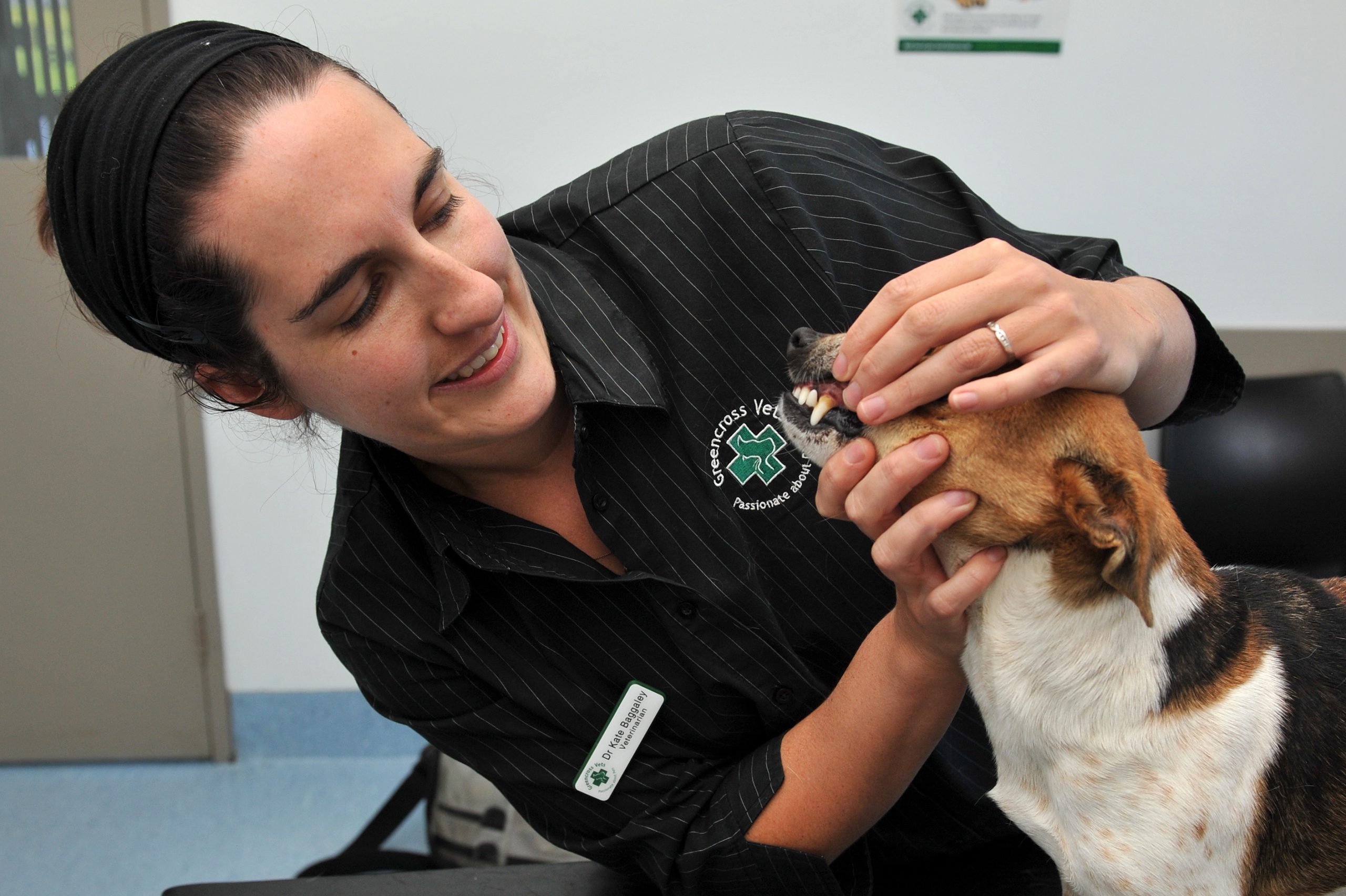A Latrobe Valley veterinarian clinic is encouraging pet owners to flip their pet’s lip in a bid to tackle teeth issues.
Figures released by Greencross Vets estimate more than 74 per cent of dogs and cats across Victoria go untreated for dental problems. In response to the figures, Greencross Vets in Morwell is offering free dental checkups throughout July and August.
“Many pet-lovers are familiar with the delightful waft of ‘doggy breath’ we endure when snuggling up with our beloved pets,” Greencross Vets director Kate Baggaley said.
“Aside from being an unpleasant accompaniment to our pets affection, it can be a warning sign of underlying dental disease.”
Dr Baggaley said periodontal disease was the leading cause of early tooth loss in cats and dogs and if left untreated, could cause localised pain, infection, abscesses and bacteraemia, which could lead to heart, liver and kidney problems.
Dr Baggaley’s dog, Jim the Jack Russell, is currently experiencing stage one periodontal disease and is booked in to have his teeth cleaned in a few weeks.
“As you can see with my own dog, he actually has a build up of tartar on his teeth, that’s what we call a grade one dental, but that goes right up to grade five,” Dr Baggaley said.
With bi-weekly teeth brushing classed as the “gold standard” in pet dental care, Dr Baggaley said although this was often not practical, there were many alternatives such as dental toys and treats.
“If you think about a human, we brush our teeth morning and night, a dog never brushes their teeth,” Dr Baggaley said.
“We’re educating people as to what’s available because if you do all these things to help prevent dental problems happening in the first place then that’s when you can improve the quality of life of the animal.
“When it gets more severe there’s definitely things we can do for dogs with bad dental disease, but obviously that involves more invasive procedures like longer anaesthetics and teeth extractions if you’re getting exposed roots.”
Dr Baggaley said four key areas for pet owners to look for when checking for dental disease were the pet’s breath, plaque or discolouration on teeth, potential redness or inflammation of gums and unusual lumps or sores which cause the pet pain when touched.











